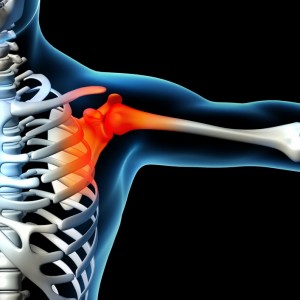 Massive Chronic Rotator Cuff Tear –
Massive Chronic Rotator Cuff Tear –
Researchers in Lyon, France, at the Santry Orthopaedic Center wanted to find out if certain rotator cuff tear patterns were associated with loss of range of motion. Philippe Collin M.D. and colleagues published a peer-reviewed article in the September 2014 Journal of Shoulder and Elbow Surgery specifically trying to identify rotator cuff tear patterns and whether they caused pseudoparalysis.
Pseudoparalysis is a condition secondary to rotator cuff pathology, where a person is unable to actively forward flex their arm. This can be a devastating condition for an individual.
Relationship Between Massive Chronic Rotator Cuff Tear Patterns and Loss of Active Range of Motion of the Shoulder
The research group looked at 100 individuals with massive rotator cuff tears. Individuals with fatty infiltration of Goutallier stage III were included in the study. The patients within divided into five groups on the basis of tear pattern. The five different groups involved a tear pattern of: 1) supraspinatus only, 2) superior subscapularis, 3) inferior subscapularis, 4) infraspinatus and 5) teres minor. They measured the patients active range of motion in each group.
Researchers found that active range of motion was significantly decreased in patients with three tear patterns involved. Pseudoparalysis was found in four out of five of the cases with a supraspinatus and complete subscapularis tear.
Pseudoparalysis was noted in only 45% of the cases involving a supraspinatus, infraspinatus and superior subscapularis tear. Loss of active external rotation was related to tears involving the infraspinatus and teres minor. Researchers found that the greatest loss of active internal rotation was related to tears involving the subscapularis.
Pseudoparalaysis and Mass Rotator Cuff Tear
Pseudoparalysis is a devastating condition for patients with rotator cuff pathology. This study revealed that if the entire subscapularis and supraspinatus tendon is torn, or three rotator cuff muscles are torn, then the patient is at risk for pseudoparalysis.
Researchers concluded by emphasizing the importance of trying to preserve the patients range of motion by repairing the rotator cuff tear with rotator cuff tear surgery prior to it involving three tendons or involving the complete subscapularis and supraspinatus tendon.
This rotator cuff repair should be performed to avoid the patient having pseudoparalysis which limits the patients use of their arm significantly. Another conclusion of the study was if a patient presents with pseudoparalysis then the physician should know that at least three rotator cuff tendons are involved in the injury, or there is a tear in the complete subscapularis and complete supraspinatus tendon.
Researchers also noted that if the complete supraspinatus, infraspinatus and superior subscapularis was involved then 45% of study participants presented with pseudoparalysis. Again, this reinforces trying to perform the rotator cuff tear surgery earlier, than later, so it doesn’t involve more than one tendon to help improve the patient’s function.

Recent Comments